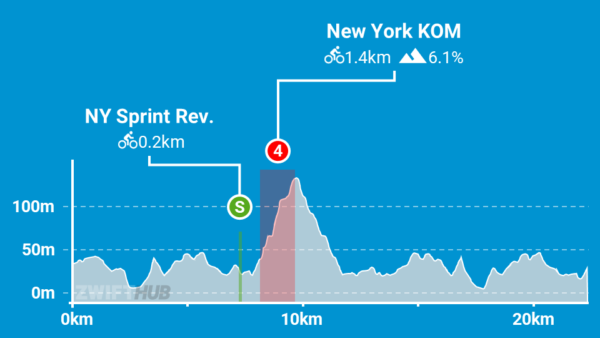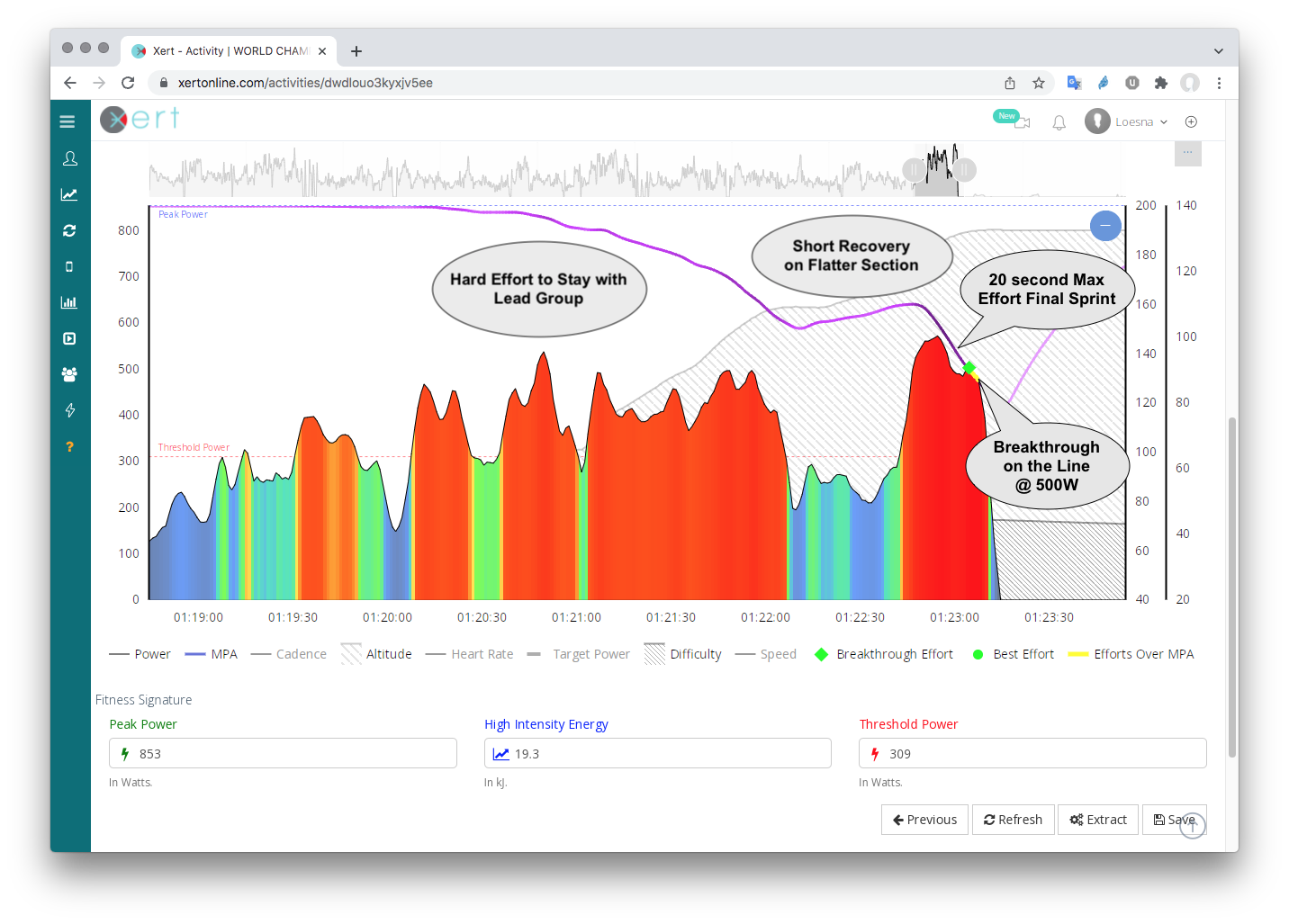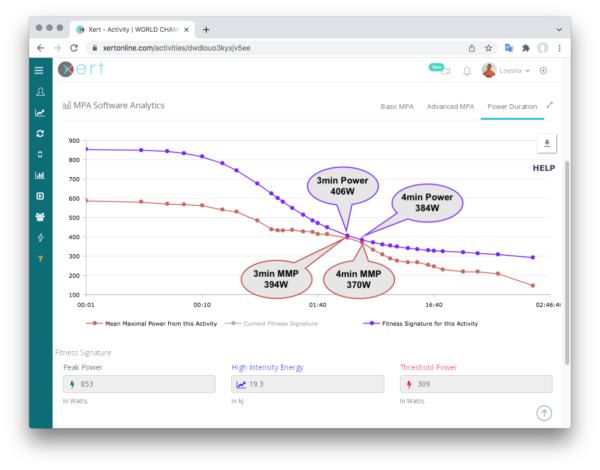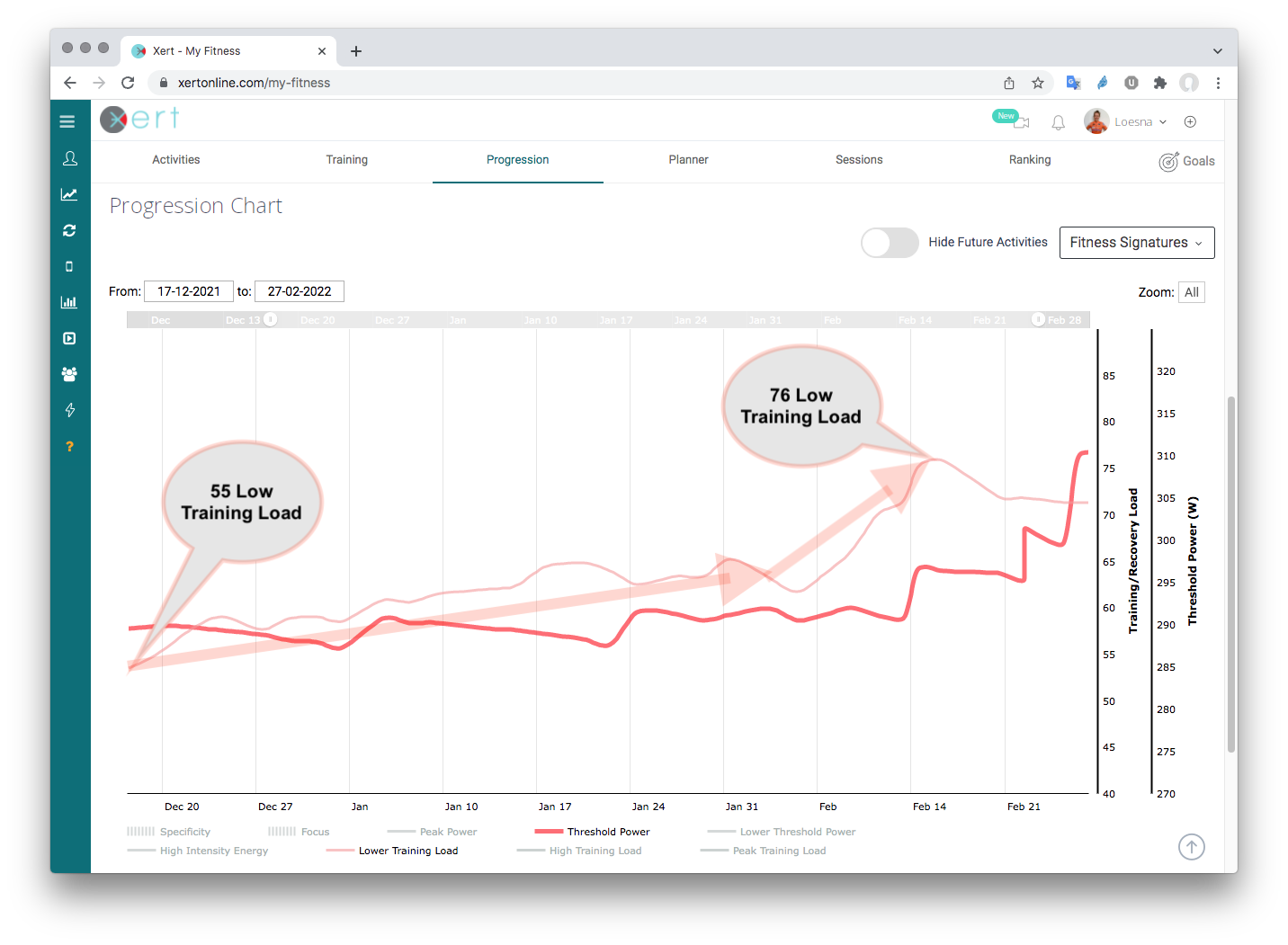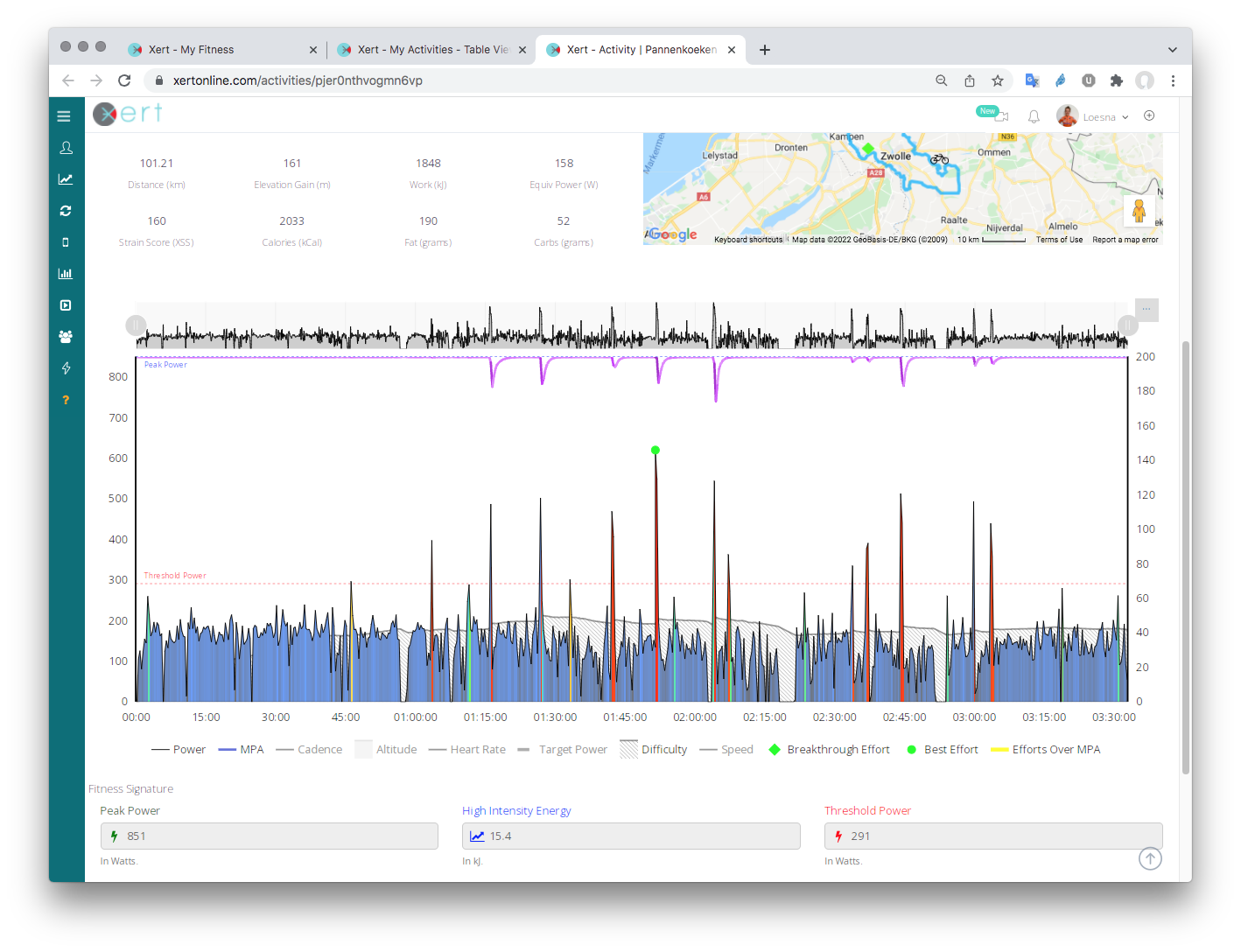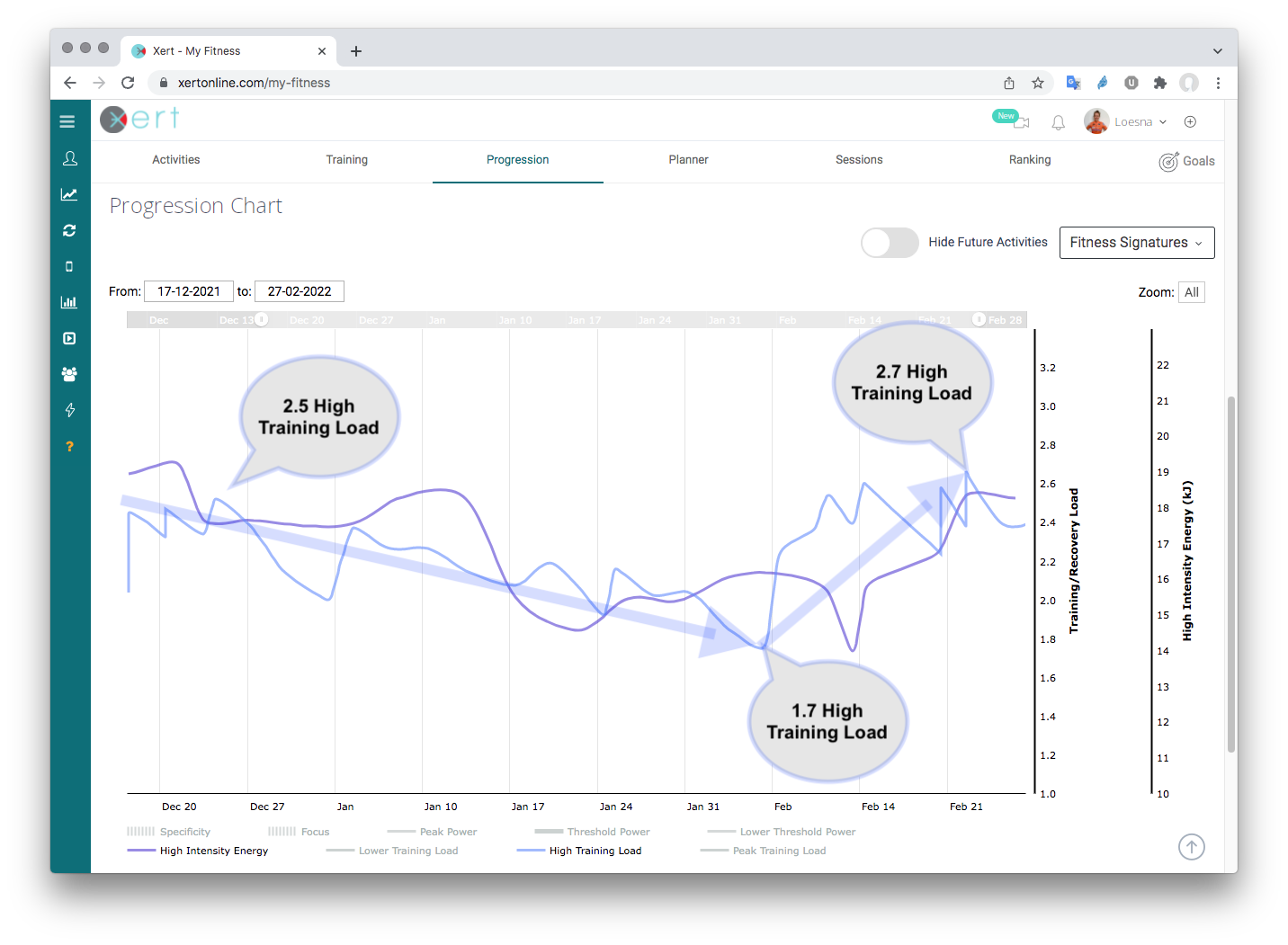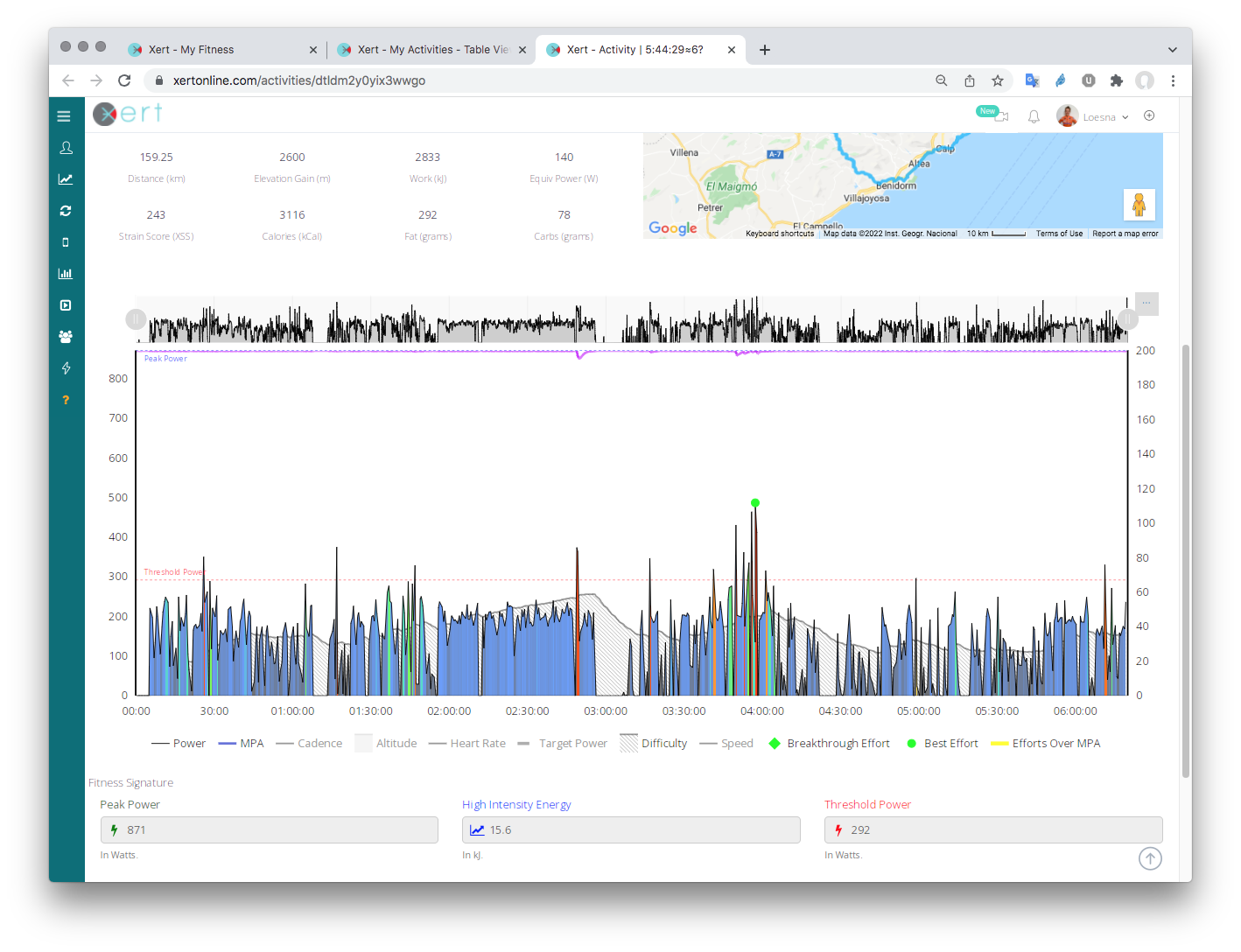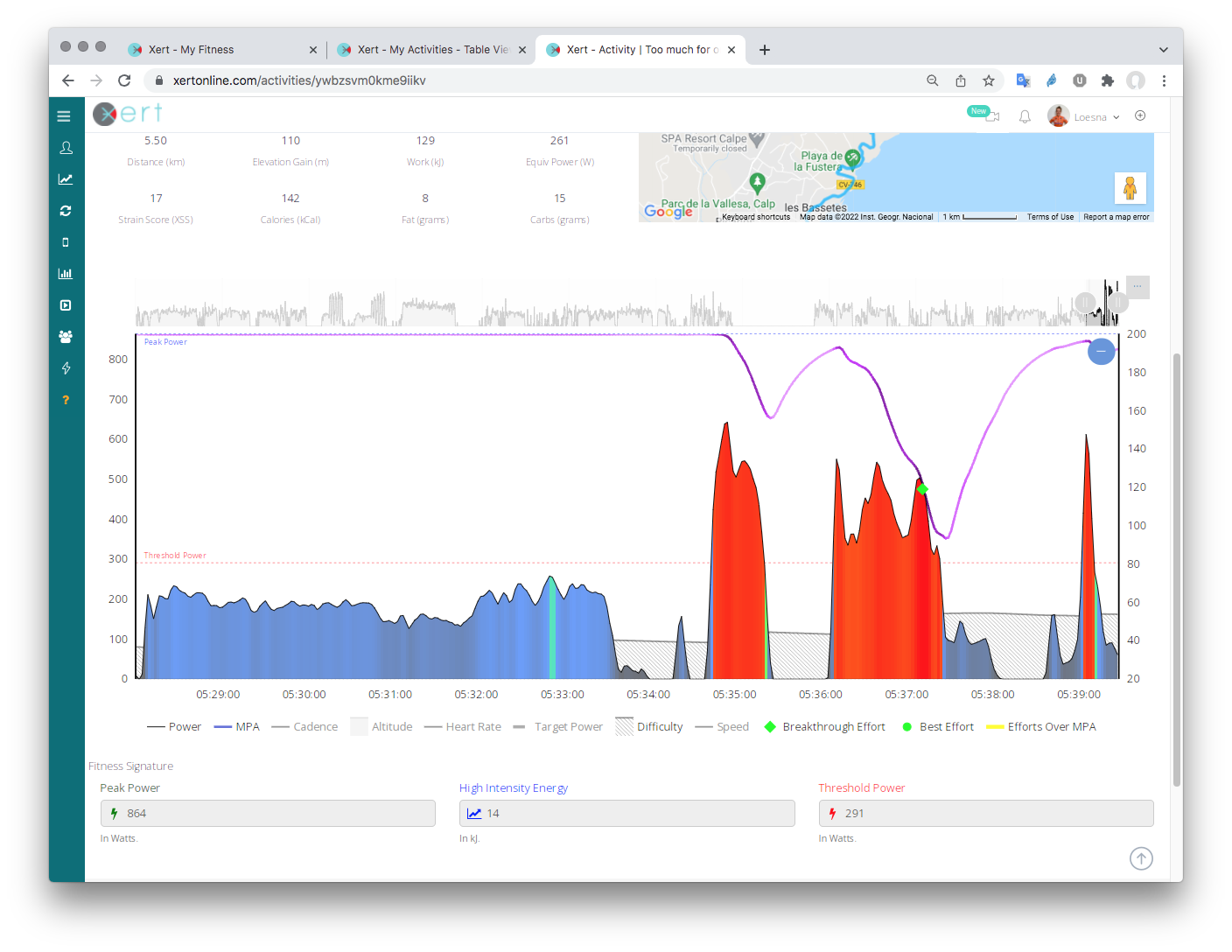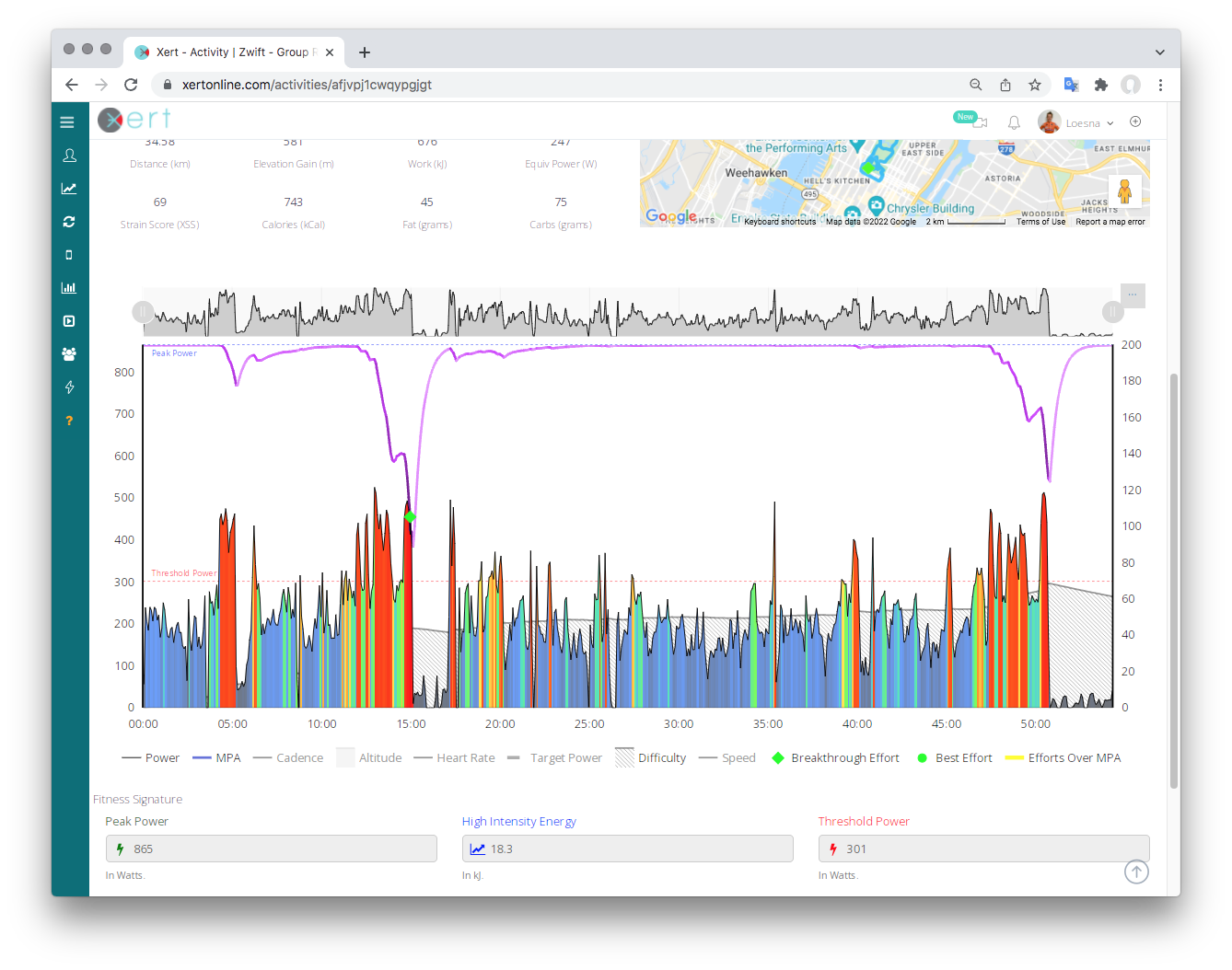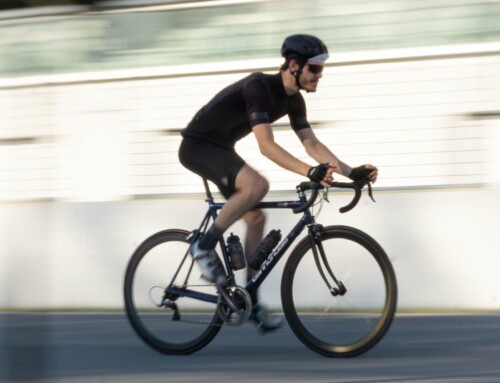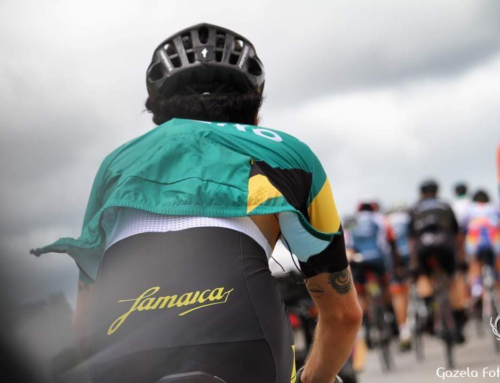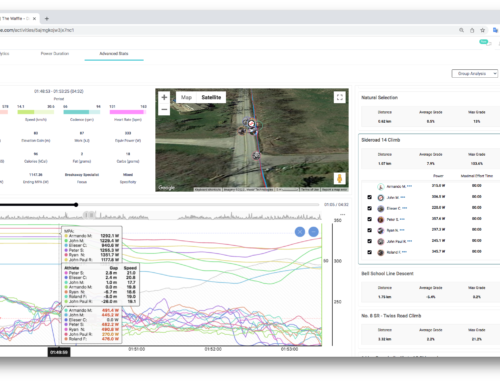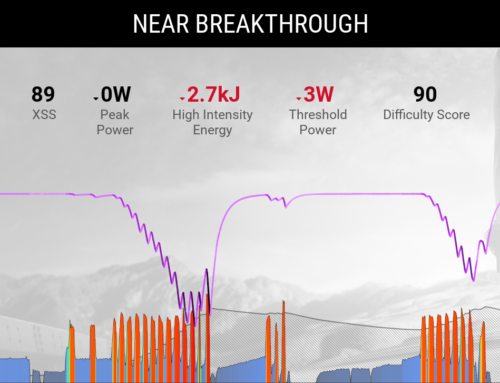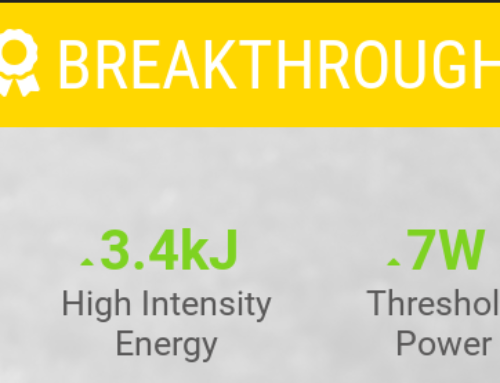Loes Adegeest Wins the 2022 UCI eSports Women’s World Championships
On February 26th, 2022, athletes from around the world competed in the UCI eSports World Championships. It was the second edition of the event and in the women’s race, former World Champion and professional rider Ashleigh Moolman Pasio (who also just finished 3rd place in this year’s Strade Bianche) was the overwhelming favourite. This year’s race was two and a half laps of the NYC Knickerbocker circuit with the finish line atop the NYC KOM. The circuit is relative flat aside from the NYC KOM climb giving the entire race nearly 1000m of elevation gain over the 57km. It’s a tough finish with a middle 500m section at 10.6% for 400m and then 100m at 15.7%. The final 500m of the race features a flat 300m followed by 100m climb at 10.8% and a flat 100m to the finish.
Loes Adegeest is an accomplished speed skater, having started racing as a teenager and races for the Dutch National Team. Speed skaters make great cyclists and vice versa and Loes is no different. She had always enjoyed cycling and quickly saw success on the Zwift racing scene. She joined the Aeonian Zwift cycling team and she has been a consistent and strong performer, racing in the Zwift Racing League’s Premier Division. She qualified for the UCI World Championship Women’s event in December 2021.
Over the 11 weeks leading into the event, she trained, strategized, focused and prepared herself for the final race on February 26th. On that day, she raced a perfect race and crossed the line to become the 2022 UCI eSports World Champion. Many saw this as an upset. But one look at her Xert breakthroughs and training leading up to the race, it wasn’t. She was destined to win.
The Race
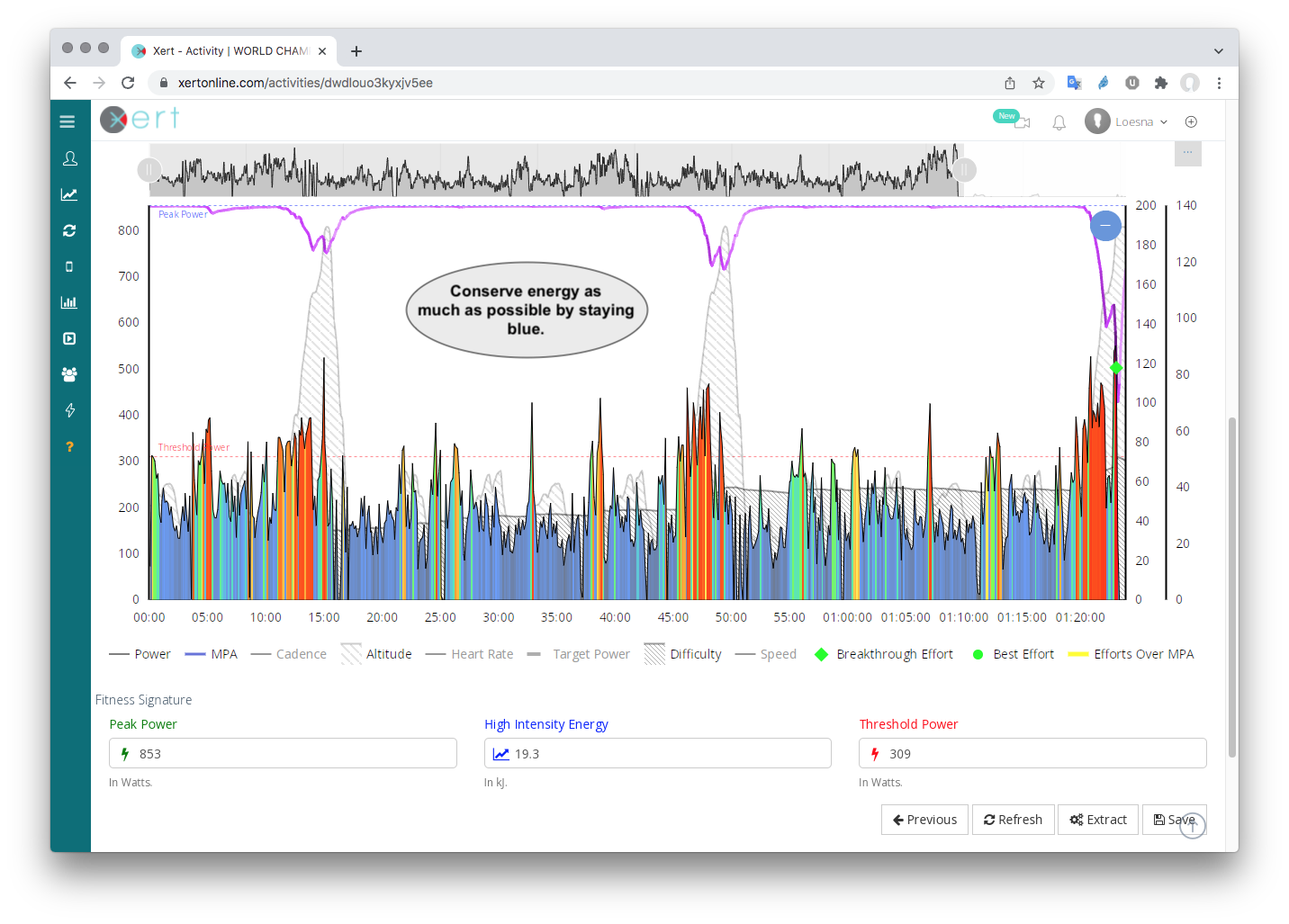 The race was a tough race from the beginning with two hard efforts up the NYC KOM that wittled down the field. To see the story of the race, we can look at her power and elevation data and as well as her Maximum Power Available (MPA). MPA is Xert’s unique metric the depicts how much power an athlete has any given moment in a race. It is the purple line on the chart above and is an indicator of fatigue. The value goes further than just showing fatigue as it also depicts how this fatigue is affecting an athlete’s ability to produce power – their maximum power. When an athlete’s power reaches their MPA value, it’s a maximal effort and often results in a breakthrough in Xert.
The race was a tough race from the beginning with two hard efforts up the NYC KOM that wittled down the field. To see the story of the race, we can look at her power and elevation data and as well as her Maximum Power Available (MPA). MPA is Xert’s unique metric the depicts how much power an athlete has any given moment in a race. It is the purple line on the chart above and is an indicator of fatigue. The value goes further than just showing fatigue as it also depicts how this fatigue is affecting an athlete’s ability to produce power – their maximum power. When an athlete’s power reaches their MPA value, it’s a maximal effort and often results in a breakthrough in Xert.
As you can see, Loes’ MPA sees some relatively minor dips during the first two climbs. Her power data is mostly blue (low intensity) with only short yellow and red efforts during the NYC KOM climbs on each lap. She had conserved energy very effectively, never being pushed or tested at any point in the race. On the final lap, a few women remained, including defending champion, Ashleigh Moolman-Pasio. Team USA launched attack after attack with Katheryn Curi making a strong move leading into the final NYC KOM climb. She was caught passed by “AMP” and three women managed to bridge and hang on: Cecilia Hansen, Zoe Langham and Loes Adegeest. Loes had been preparing for this moment and knew exactly what to do. She took a moment on the flat second section before the final pitch to the finish to gather just a bit of needed energy and at the base of the climb she deployed her feather power-up and launched an all-out maximal effort with everything she had for 20s. The power-up and effort were perfectly timed, something she had practiced over and over with breakthrough after breakthrough efforts in her training. With her fitness at a level it had never been before, everything had come together at the moment: the perfect strategy, perfect execution, perfect planning and perfect training. Loes wins the race.
Examining the Winning Effort
Looking the final winning effort, Loes gets the hallmark power and MPA representation of a win – a breakthrough-on-the-line. This happens when an athlete reaches and sustains a breakthrough effort as they cross the finish line. It’s the definition of a perfect ending to a race.
The system evaluated her signature on this day to be 853W, 19.3kJ and 309W for her Peak Power, High Intensity Energy and Threshold Power, respectively. These three numbers are called a fitness signature in Xert. Her Threshold Power was 309W and at just 57kg is an impressive 5.4W/kg. This saw an increase from her previous high of 302W just 5 days earlier. But it wasn’t just her Threshold Power that made this win happen. It was her High Intensity Energy too. It’s as important as Threshold Power, if not more, to achieve this race-winning, all-out effort.
Is it all about FTP?
It was just recently that her High Intensity Energy was as low as 15.3kJ, in fact. This was at the end of a phase where she had focused on raising her Threshold Power (more on this below). What if she had continued to focus on her Threshold Power and not on her High Intensity Energy? What would it have taken to achieve the same result? To find out, we use the Advanced capabilities of Xert to examine how another athlete’s signature fits the same power data:
Here we have an athlete with a High Intensity Energy of 15kJ. In order to perform the same effort Loes performed that day, this athlete would need to have a Threshold Power of 327W! (5.7W/kg!) For female cyclists, this would be reserved for a very, very few at the top of their game. Had Loes been focused on her Threshold Power, reaching 327W would have been highly improbable, perhaps even impossible.
Others may have examined race details and thought that focusing on sprint power would be a good way to prepare. The final effort is only 20s so could be for sprinters? What if her Peak Power had risen to 1000W?
Doesn’t seem like it would have helped much at all. Threshold Power would still need to be in rarified territory (324W). That final 20s effort isn’t performed in a relatively rested state hence Peak Power doesn’t have a lot of influence on the athlete’s ability to push this power under this much fatigue. Pure sprinters really don’t have a chance here.
Focus Focus Focus
Loes had intentionally chosen Puncheur (4 minute W/kg Focus Athlete Type) in Xert to help guide her toward the right training in preparation for the event. She had done the NYC KOM climb many times before and knew that it was a 4 minute effort. She also knew that it wasn’t a paced as a 4 minute constant power effort. There was a short flat in the middle where there was some recovery. Her 1 minute power was also important. Indeed, the final sprint saw her reach a breakthrough at 500W, far above her 4 minute power. If we examine the power curve for the race, we get some indication of this. Rarely do power curves reveal this unfortunately, since efforts paced from fresh to failure do not occur often in racing power data. However in this case, there are some interesting things to observe:
Preparing to Win
Loes had been using Xert for just over 6 months and decided to use the platform in preparation for the world championships. Having examined the route, she recognized from the beginning that this was going to be a puncheur’s race. She set her Athlete Type to Puncheur and Target Event Date to Feb 26th and monitored her training. Most of her training would be by choosing both indoor Zwift rides and outdoor riding that are in-line with the advice being offered by Xert’s Adaptive Training Advisor. She also knew that she’s need to be creative. Having been selected in December, it’d didn’t give her much time to perform a thorough Base-Build-Peak Training Program. She had less than 80 days to prepare and also had to fit in a Training Camp with her team in early February:
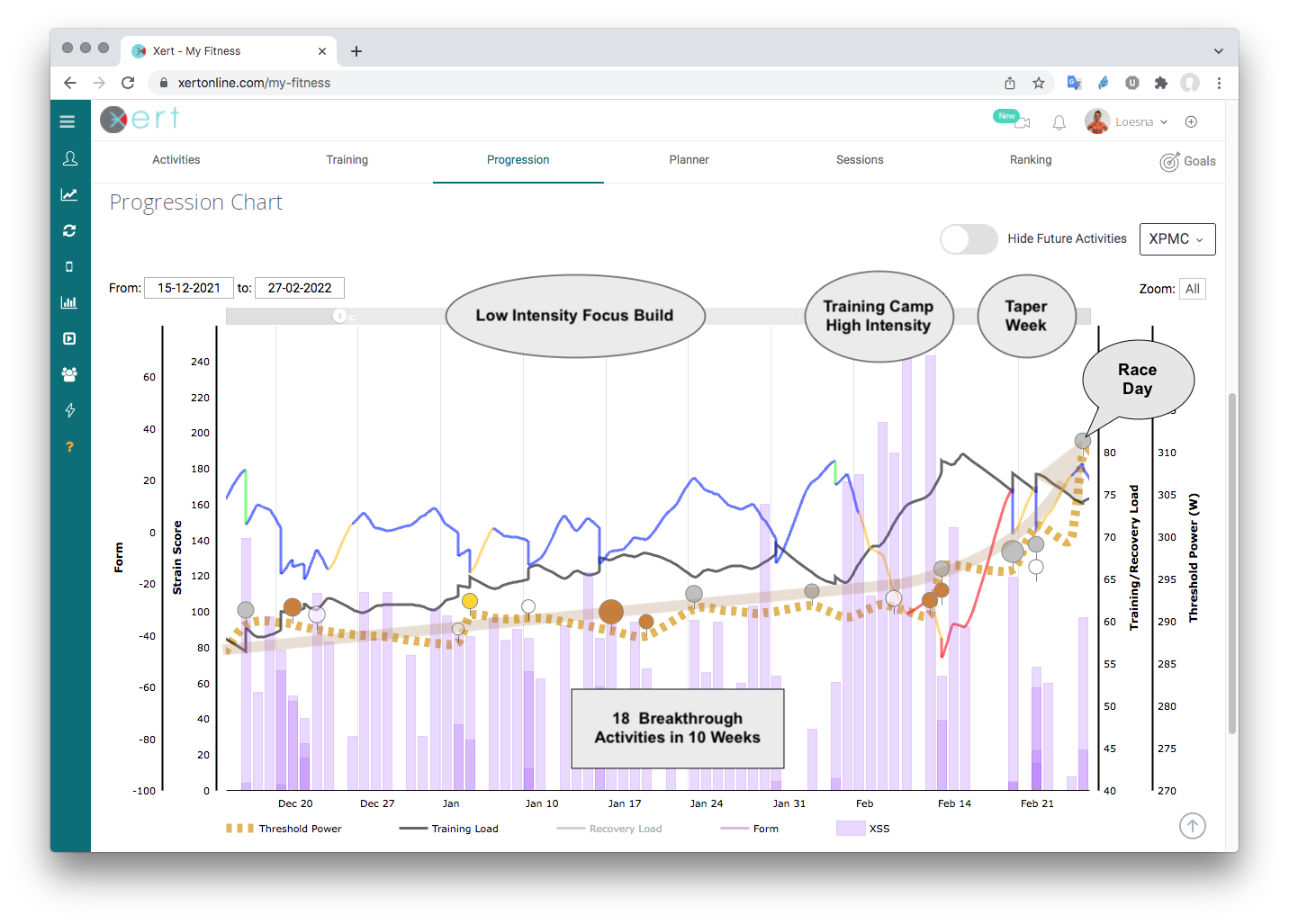 She had been doing a lot of Zwift training and racing prior to the start her program and had a well developed High Intensity Energy but had to switch to building some base. But she also had to be mindful of the intensities needed to win and practicing her race winning efforts throughout her training. In the 10 weeks of her focused training, starting in mid December and ending on race day, she had 18 breakthroughs – nearly 2 a week – many of them similar in intensity and duration like she’d have to perform on race day. Even with all those breakthroughs, she held steady on building her Low Intensity Training Load over that period, increasing it from 55 to 76:
She had been doing a lot of Zwift training and racing prior to the start her program and had a well developed High Intensity Energy but had to switch to building some base. But she also had to be mindful of the intensities needed to win and practicing her race winning efforts throughout her training. In the 10 weeks of her focused training, starting in mid December and ending on race day, she had 18 breakthroughs – nearly 2 a week – many of them similar in intensity and duration like she’d have to perform on race day. Even with all those breakthroughs, she held steady on building her Low Intensity Training Load over that period, increasing it from 55 to 76:
This phase saw her doing more lower intensity training than before, including more outdoor longer rides:
In that process she had to let her High Intensity Training Load slide in order to keep the right focus on your Low Intensity Training Load / Threshold Power to get it as high as possible. She also knew she was going to get a huge dose of High Intensity training during her Training Camp and was going to use that as her Peak phase to get her back on Focus and top up her High Intensity Energy to where it started:
The training camp ended up being a great opportunity to overreach. She loaded up on both Low Intensity Training Load with some very long rides:
.. but also worked hard to get her High Intensity system ready by practicing race winning efforts for breakthroughs during training camp:
Following the training camp, all that remained was to trust the taper to allow her systems to rebound from the time in deep yellow and red form (this is Xert’s Training Status) and bring it back to blue for the race. To ensure everything was ready, she tossed a few breakthrough efforts during taper week, mimicking the race event:
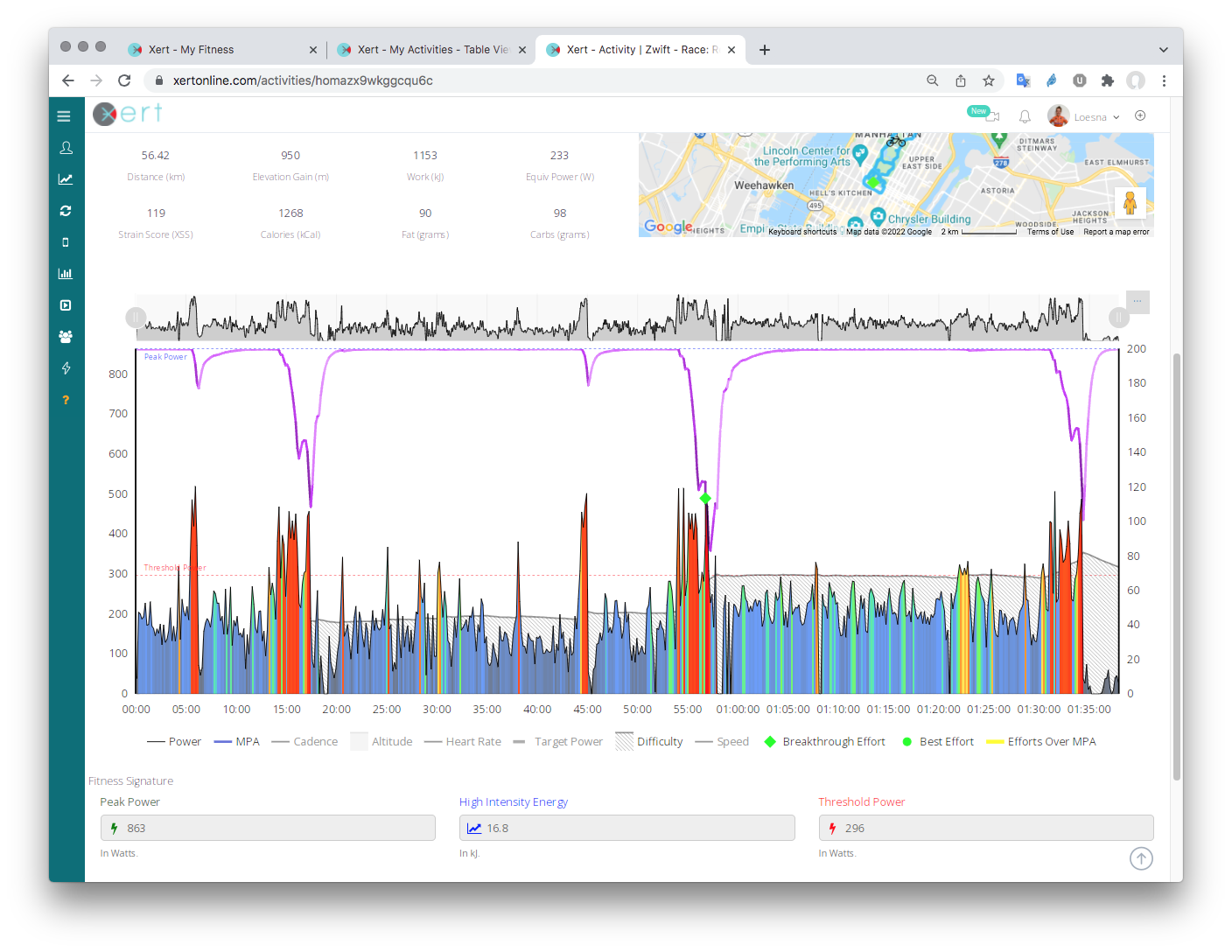 Even just a few days before the race to confirm she was ready, she pushed for a breakthrough, seeing her signature reach a level it had never reached before:
Even just a few days before the race to confirm she was ready, she pushed for a breakthrough, seeing her signature reach a level it had never reached before:
Then on race day, she went in with the confidence that she had fully prepared herself, she had practiced the race winning move over and over for breakthroughs and that she knew she had an opportunity to win the race. And she did.

